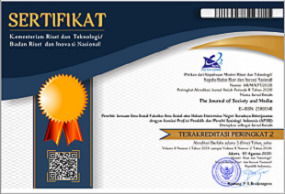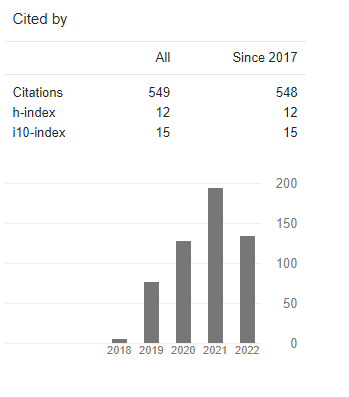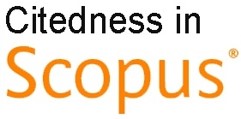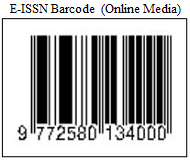Technology Capitalization for Javanese Cultural Broadcast Serving Surabaya Urban Community
DOI:
https://doi.org/10.26740/jsm.v7n1.p49-71Keywords:
cultural radio, radio media fm, the network society, virtual ethnographyAbstract
This study explored the use of technology in Radio Media 90.1 FM for broadcasting Javanese cultural programs to increase capital. The biggest audience for this radio is Surabaya's urban community, which loves Javanese culture. This study uses a qualitative method with a virtual ethnographic approach so that researchers can be participatory online and offline with broadcasting activities. Researchers get data about programming policies and activities of the Javanese culture-lover community at the time of the broadcast. Five informants in this study (WID, ANT, SAM, GEN, MUS representing elements of managers, programmers, broadcasters, technicians, and listeners). This study found that the technology adaptation for capitalization used is audio streaming applications and Facebook. Through the Facebook account (https://www.facebook.com/Media90.1FM), listeners build a virtual community of Javanese culture lovers. The study concludes that the interaction of the Javanese culture lover community on Facebook (viewers, likes, and comments) is a form of technology capitalization applied by radio Media 90,1 FM as data advertisers can directly utilize
References
Achmad, Zainal Abidin, and Juwito. 2020. Sritanjung FM: Mediamorfosis Dari Radioe Lare Using Menjadi Kebanggaan Banyuwangi. Surabaya: Sahaja.
Durant, Alan, and Marina Lambrou. 2009. Language and Media: A Resource Book for Students. New York: Routledge.
Eltzroth, Carter, and Charles Kenny. 2003. Broadcasting and Development Options for the World Bank. 11. Washington, DC.
Federal Ministry of Transport and Digital Infrastructure. 2017. Action Plan for the Transformation of Radio Broadcasting in the Digital Age. Berlin.
Gazi, Angeliki, Guy Starkey, and Stanislaw Jedrzejewski. 2011. Radio Content in the Digital Age: The Evolution of a Sound Medium. Edited by A. Gazi, G. Starkey, and S. Jedrejewski. Bristol: Intellect.
George, William, and Scott Roberts. 2002. Radio Industry Review 2002: Trends in Ownership, Format, and Finance. Paper #11. Washington.
Hine, Christine, ed. 2005. Virtual Methods : Issues in Social Research on the Internet. 1st ed. Oxford: Berg.
PRSSNI Jawa Timur. 2014. "RADIO MEDIA 90.10 FM." Radiojatim.Com. Retrieved 28 July, 2022 (https://www.radiojatim.com/index.php?option=com_content&view=article&id=79&Itemid=310).
Strinati, Dominic. 2018. An Introduction to Theories of Popular Culture. 2nd ed. London and New York: Routledge.
Turkle, Sherry. 2011. Life on the Screen: Identity in the Age of the Internet. New York: Simon and Schuster.
Woods & Poole Economics. 2019. Local Radio and TV: Helping Drive the United States Economy. Washington DC.
World Bank Group. 2016. Digital Dividends. Washington DC.
Downloads
Published
How to Cite
Issue
Section
License
Copyright (c) 2023 The Journal of Society and Media

This work is licensed under a Creative Commons Attribution 4.0 International License.
 Abstract views: 323
,
Abstract views: 323
, PDF Downloads: 473
PDF Downloads: 473












